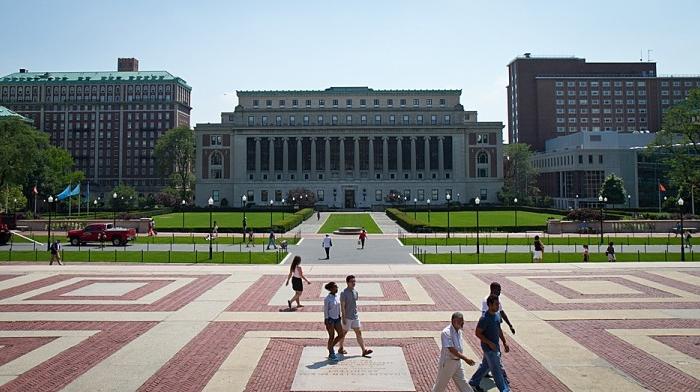NEW YORK—What do the world’s top economic catalysts such as Apple, Canon, and Disney need the most? Engineers.
To help push New York City forward as a high-tech leader, Mayor Michael Bloomberg and Columbia University President Lee C. Bollinger revealed plans to double both Columbia’s current science engineering staff, and graduate students, at a press conference at the university Monday.
Columbia will open a new Institute for Data Sciences and Engineering. “This is the most ambitious economic plan the city has had in decades,” Bloomberg said.
The plan will create 44,000 square feet of new applied science and engineering space on Columbia’s Morningside Heights and Washington Heights campuses by 2016, hiring 75 new faculty staff over the next decade and a half.
Although Columbia’s School of Engineering and Applied Science ranks 17th for computer science schools in the world, and 10th in the United States, the percentage of Columbia’s engineering professors elected to the national Academies of Engineering and Sciences ranks Columbia in the nation’s top five engineering schools.
The difference between Columbia and its competitors lies not in the quality of its programs, but in the lack of space.
Eitan Grinspun, the director of Columbia University’s Computer Graphics Group, invented the avant-garde formula that Disney used to create Rapunzel’s palpable hair in the 2010 Disney film “Tangled.” It was an effect, providing a flow identical to that of human hair, never before seen in 3-D films.
“We are limited only by the amount of space we have to do their work, it’s a much smaller scale than our leading peers,” Bollinger said. Compared to schools such as the Massachusetts Institute of Technology, University of Cambridge, and Oxford University, Columbia lags behind with only 164 engineering professors.
The university will begin developing the first of two phases of the institute immediately. The 44,000 square feet of applied science and engineering facilities will be created in existing buildings for the Institute for Data Sciences and Engineering by August 2016. Columbia will hire 30 new faculty members for the first phase.
For phase two, Columbia might expand the Audubon building at the university’s Medical Center in Washington Heights, creating a 10,000-square-foot bioresearch incubator in the building.
The city will pay $15 million to assist this development, including discounts on energy transmission costs and lease flexibility for the new institute.
Columbia itself will spend $80 million in private investment to complete this project. The expenses of the new institute will not affect tuition rates, said Kathy McKeown, the inaugural director of the Institute for Data Sciences and Engineering. The $80 million will come from the money made through Columbia’s engineering research.
It remains to be seen where the rest of the money will come from to finish the institution. “I'll split it with you,” Manhattan Borough President Scott Stringer joked.
“We'll talk about this afterward,” Mayor Bloomberg responded after a moment of uncomfortable silence.
The Focus
The new Institute for Data Sciences and Engineering will focus on five specific areas: a New Media Center, a Smart Cities Center, a Health Analytics Center, a Cybersecurity Center, and a Financial Analytics Center.
The new institute will generate an estimated $4 billion in economic growth across the five boroughs over the next three decades.
“This is the most exciting moment in Columbia’s 150-year history,” said Donald Goldfarb, interim dean of Columbia’s School of Engineering and Applied Sciences.
Mayor Bloomberg expected the Morningside campus to join Flatiron and Dumbo in leading New York’s tech innovations.
This initiative is a part of a competition created by the New York City Economic Development Corporation in July last year, which would give universities city capital, and city-owned land to expand campuses.
In December 2011, the city created its first partnership with Cornell University and Technion, providing $100 million in city funds to build a 2 million square-foot tech campus on Roosevelt Island.
When completed, the new Roosevelt Island campus will nearly double the number of full-time, graduate engineering students enrolled in leading New York City master’s and doctoral programs.
In April 2012, the city created a second partnership with a NYU-led consortium to build the Center for Urban Science and Progress in Downtown Brooklyn. The center will focus its studies on 21st century urban issues.
The city’s competition has received seven responses from 17 world-class institutions from around the globe. Negotiations continue with other institutions, such as Carnegie Mellon University, which submitted Applied Sciences NYC proposals.
The Epoch Times publishes in 35 countries and in 19 languages. Subscribe to our e-newsletter.










Friends Read Free